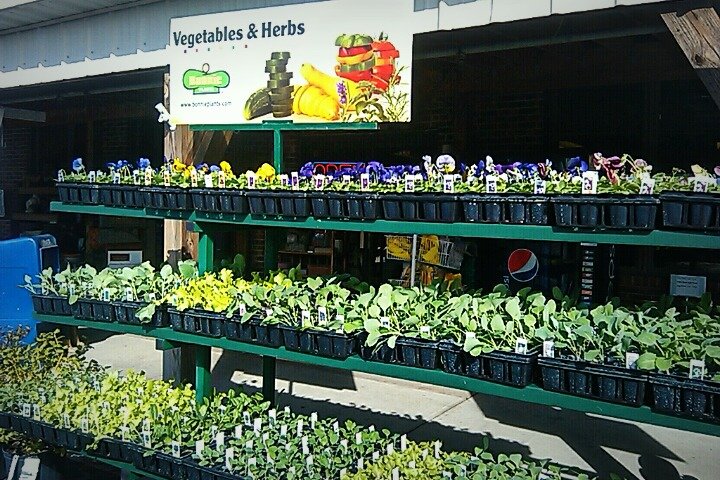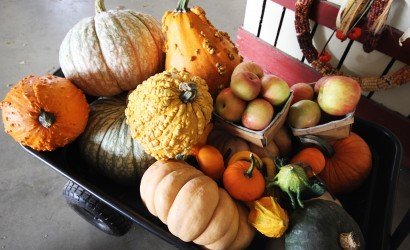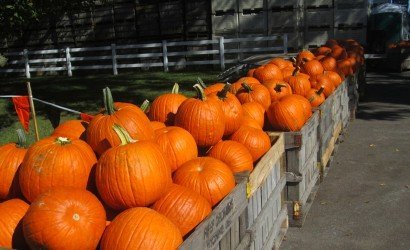At Selbyville Pet and Garden, during one recent warm and sunny March day, the anticipation of spring and planting season was palpable. Cedar Swamp Farm of Bishopville, MD had just made a delivery of pansies, cauliflower, and lettuce—all just waiting to be planted in local gardens.
According to Selbyville Pet and Garden employees Betty and Shona, it’s time to put these, and other cold weather crops in the ground. It’s now safe to plant broccoli, cauliflower, brussel sprouts, cabbage, kale, potatoes, onion sets, and various lettuces. But before you start planting, it’s a must to make sure the soil is properly fertilized.
“Most of the complaints we heard last year were people coming in saying their tomatoes weren’t growing. And when we asked them if they had added fertilizer, they hadn’t. That’s the problem—you have to replenish the nutrients consumed by last year’s plants, by adding new fertilizer,” explained Shona.
 As a yearly guideline, February and March are the months to begin doctoring up soil. Compost materials such as leaves and straw are options found around the yard. Selbyville Pet and Garden sells mushroom compost, and you can find bagged fertilizer at any home and garden store. These materials can be added the same time you put plants into the ground. Additional matter like bone meal and plantone can also be added to soil, but be cautious about adding too much. Excess fertilizer, in addition to what it can do to your plants, can also be harmful to the local environment—specifically the bay and wetlands by raising nitrogen and phosphorus levels.
As a yearly guideline, February and March are the months to begin doctoring up soil. Compost materials such as leaves and straw are options found around the yard. Selbyville Pet and Garden sells mushroom compost, and you can find bagged fertilizer at any home and garden store. These materials can be added the same time you put plants into the ground. Additional matter like bone meal and plantone can also be added to soil, but be cautious about adding too much. Excess fertilizer, in addition to what it can do to your plants, can also be harmful to the local environment—specifically the bay and wetlands by raising nitrogen and phosphorus levels.
“If you have good black dirt, not fill dirt (pale beige or mostly sandy), the less fertilizer you have to add. The darker the soil, the richer it is in nutrients,” recommended Shona.
 More specifically, the primary elements needed to feed plants are nitrogen, phosphorus, and potassium. A deficiency in nitrogen can cause stunted growth; low levels of potassium can cause thin skin, small fruit, and susceptibility to disease. Secondary food elements including magnesium, copper, iron, sulfur, and calcium—among others, also play vital roles in the overall health and vitality of plants and flowers. The acidity or alkalinity of soil is also an important factor. Most plants and flowers do best in soil with a pH between 6.0 and 7.0. Neutral state is considered at a level of 7. Levels below 7 are acidic, and above indicate alkalinity.
More specifically, the primary elements needed to feed plants are nitrogen, phosphorus, and potassium. A deficiency in nitrogen can cause stunted growth; low levels of potassium can cause thin skin, small fruit, and susceptibility to disease. Secondary food elements including magnesium, copper, iron, sulfur, and calcium—among others, also play vital roles in the overall health and vitality of plants and flowers. The acidity or alkalinity of soil is also an important factor. Most plants and flowers do best in soil with a pH between 6.0 and 7.0. Neutral state is considered at a level of 7. Levels below 7 are acidic, and above indicate alkalinity.
If you want to know exactly what condition your soil is in, consider taking a soil sample. You can purchase test kits at home and garden centers, or online. Some Universities also offer the option of sending a soil sample to their extension offices for a full analysis. The College of Agriculture and Natural Resources at the University of Delaware offers this service. The PDF below provides exact instructions on how to do so.
 |
 |
Once the status of the soil is determined, and if you have a large area to cover, you can purchase dirt, fertilizer, and mulch in mass quantities, and even have it delivered, (available at Selbyville Pet and Garden, if the quantity needed is at least three tons, which equals three yards.) To determine how much you will need, bring the dimensions of your garden with you. You can also use the following guidelines:
1 yard of material will cover 2 inches deep for 100 square feet, which is a 10-foot by 10-foot area.
Happy Gardening! Send in your gardening photos to be shared in Shorebread’s gallery; Submissions@shorebread.com.









